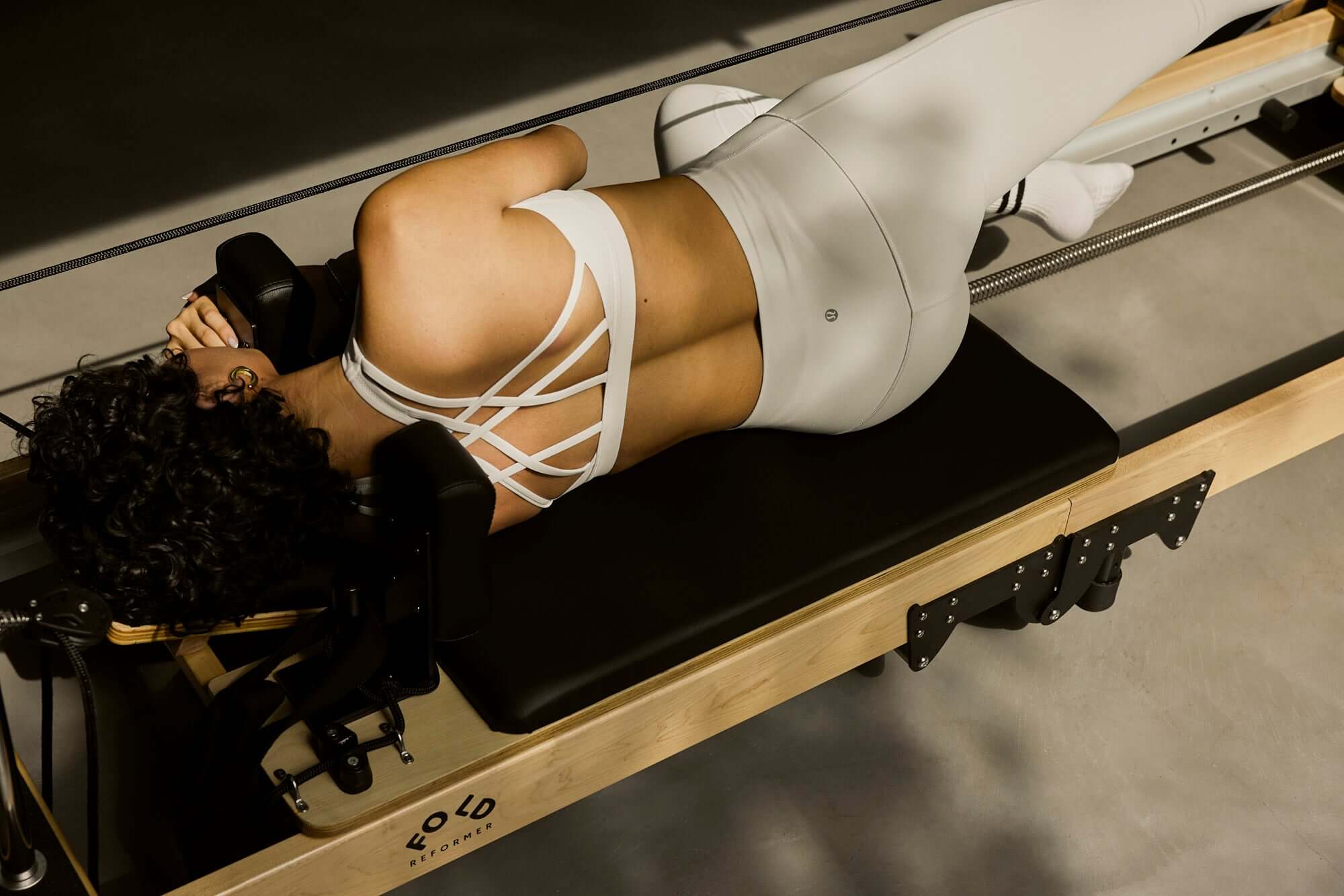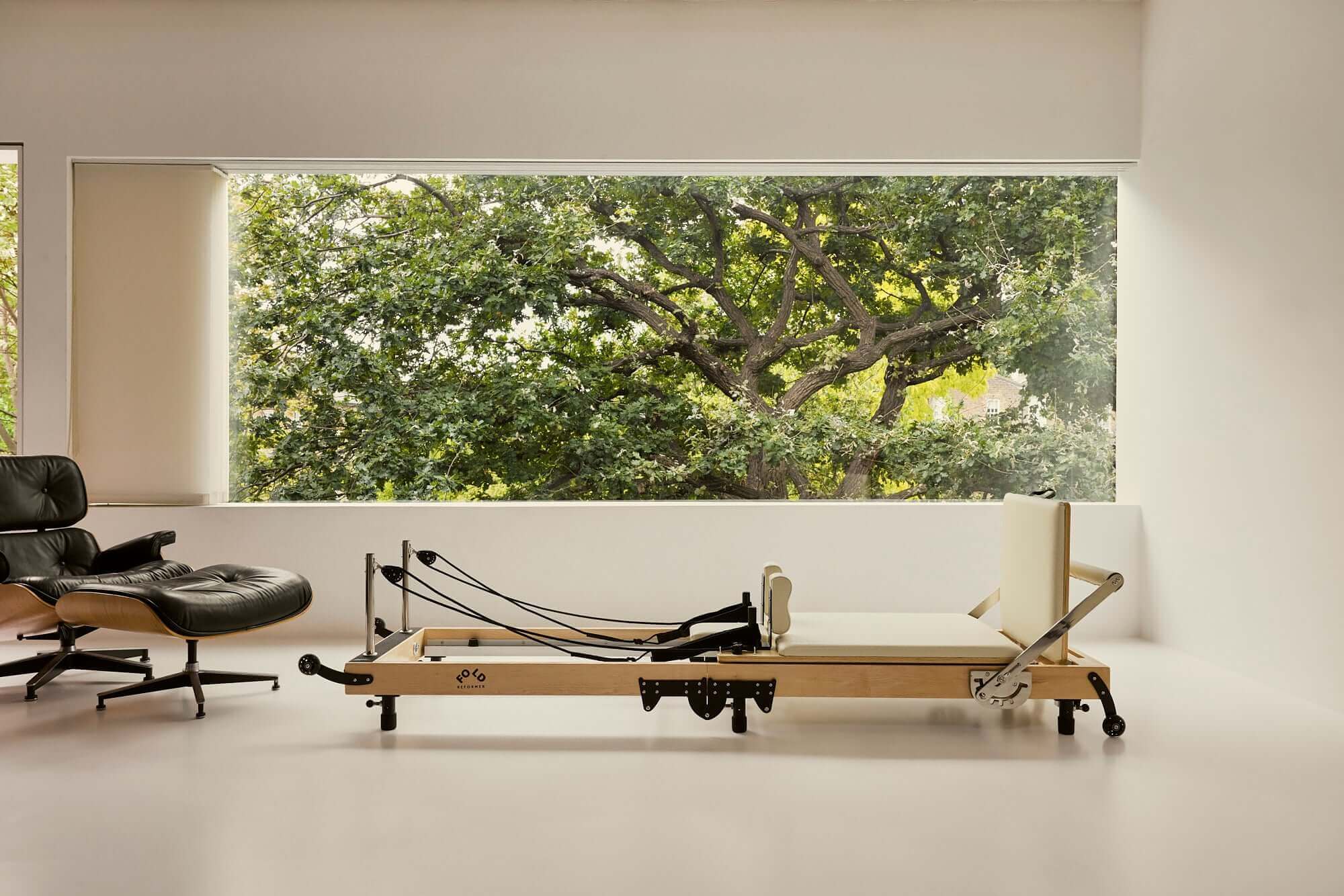Pilates, developed by Joseph Pilates in the early 20th century, has evolved into various forms, one of which is the increasingly popular Reformer Pilates. Distinguished by its use of a specialised apparatus to enhance precision, control, and effectiveness, Reformer Pilates stands as an innovative solution to the common issue of achieving a full-body, low-impact workout that improves posture, flexibility, and strength.
Enter Reformer Pilates.
This machine-based workout deploys a sliding platform with springs, bars, and straps to deliver a versatile and adjustable resistance, catering to all levels of fitness. It capitalises on resistance to sculpt lean muscle and bolster the core, offering a multifaceted approach to physical wellness.
Origins of Reformer Pilates
Joseph Pilates, German-born fitness visionary, created the method during the early Twentieth Century. His approach was holistic, focusing not only on physical health but also mental wellbeing.
In an internment camp during World War I, Joseph crafted his premiere equipment (later termed the reformer) from hospital beds. This innovation allowed immobilized detainees a means to rehabilitate and strengthen their bodies.
The terms “Contrology” and “Reformer” became synonymous with precise, controlled movements designed to enhance one's physical condition within this pioneering system.
Joseph Pilates' Legacy
Joseph Pilates devised a revolutionary fitness system that transcended routine exercise, transforming it into a holistic discipline for physical and mental harmony.
His methodology was predicated on the synergy of mind and body, fostering a "uniform development". Each movement in his system is a testament to his belief in a balanced and integrated body, promoting complete physical wellbeing.
Pilates' enduring principles set the stage for today's fitness innovation.
His legacy endures: contemporary Reformer Pilates is imbued with the same precision and integrative philosophy as the original apparatus. The modern rendition not only honors his vision but also evolves with biomechanical research, perpetuating his impact on our quest for optimal health.
Evolution from Mat to Machine
Joseph Pilates's initial work revolved around mat-based exercises, a series of movements that demanded mental and physical precision, balance, and control. These principles laid the foundation for his future innovations.
The Reformer was his ingenious response, a machine designed to amplify the benefits of his mat exercises. It introduced resistance and support, enhancing his practice.
Reformer Pilates emerged as Joseph Pilates adapted his mat exercises for his invention, the Universal Reformer—now simply known as the Reformer. This apparatus shifted the discipline into a new paradigm of physical training, offering a diverse array of exercises facilitated by its unique structure.
Crafted to meticulously train the body's powerhouse—core, buttocks, lower back, and thighs—the Reformer integrates spring resistance and a moving carriage. This elevates the practice, allowing finer tuning of muscles and superior control. It does so by encouraging a harmonious dialogue between resistance and precision, thus exemplifying Pilates's principle of "contrology" in an apparatus-based form.
Reformer Pilates Decoded
Reformer Pilates, an apparatus-based exercise system, is distinguished by the use of a sophisticated machine known as the Reformer. Constructed to transform Joseph Pilates's original mat exercises, the Reformer augments these workouts with dynamic resistance, providing a stimuli-rich environment for the practitioner. Its platform is a catalyst for the development of core strength, flexibility, and adept movement coordination, underpinning the exercise with a more intense and targeted approach.
The architecture of the Reformer is designed to accommodate a full spectrum of movements, ranging from fundamental to intricate, each demanding variable degrees of strength and flexibility. A versatile "carriage" glides along rails, challenged by a series of springs adjustable to suit individual strength levels and training objectives. In this cultivated environment, precision is paramount and each muscle group is engaged thoughtfully, ensuring that the exercises are not merely performed, but mastered with finesse and mindful control.
The Reformer Machine Explained
The Reformer is a sophisticated apparatus integral to the practice of Reformer Pilates.
- Carriage: The moving platform upon which the practitioner lies, kneels, or stands, providing the foundation for exercises.
- Springs: Attached to the carriage, these offer varying levels of resistance, tailorable to the practitioner's strength and the exercise's requirements.
- Footbar: A movable bar at the end of the Reformer against which feet or hands are placed, depending on the exercise.
- Straps: Used for upper and lower body exercises, straps add complexity and range to workouts.
- Frame and Rails: The structure housing the carriage and ensuring smooth, controlled movements.
- Headrest and Shoulder Blocks: These stabilise the head and shoulders, aiding in proper form and alignment.
In its assemblage, the Reformer is a conduit for sophisticated exercise sequences.
Each component of the Reformer is meticulously conceived to facilitate a myriad of exercises targeting strength, flexibility, and coordination.
Primary Reformer Exercises
The Footwork series acts as a foundational set, promoting alignment and strength in the lower limbs.
With exercises such as The Hundred, dynamic abdominal engagement is forged through a challenging blend of precision, breath, and movement. Straps become pivotal, elongating the limbs whilst the practitioner negotiates the rhythm of their breathing with powerful core activation. Amid the intensity, correct posture and muscular coordination are indispensable, ensuring efficacy and preventing injury.
Subsequently, the Short Spine Massage emphasises spinal articulation and hamstring flexibility. Through a controlled rolling movement, the spine is decompressed, enhancing both intervertebral space and overall flexibility. The straps again play a crucial role, guiding the legs in a fluid overhead arc that challenges one's proprioceptive abilities to maintain a seamless flow.
For upper body conditioning, the Rowing Series is indispensable, targeting the shoulders, back, and arms. Isolating these muscle groups within various planes of motion refines the body's structural integrity and functional power. With each repetition, the harmony between the resistance provided by the springs and the controlled carriage movements nurtures a profound strengthening of the entire torso, cultivating an equilibrium between posture and muscular strength.
Benefits of Reformer Pilates
Reformer Pilates enhances core stability, crucial for bodily alignment and injury prevention, through targeted resistance mechanisms. It meticulously fortifies the powerhouse—your body's centre.
By integrating multifaceted movements with dynamic tension, Reformer Pilates improves joint mobility and muscle elasticity, often resulting in a marked increase of functional range of motion. This progressive resistance training effectively bolsters muscular endurance and mitigates the risk of wear and tear on the joints, fostering long-lasting muscular health.
The system innovatively combines strength with flexibility training, which is instrumental in sculpting a balanced physique. These elements are vital to both athletic performance and everyday wellness, promoting an integrated approach to physical conditioning.
Enhancing Core Strength
Core strength: a paramount Reformer Pilates objective.
In Reformer Pilates, the spring-loaded carriage serves as a resistance tool, fostering the engagement and strengthening of the core musculature. Its uniquely designed exercises focus on the deep stabiliser muscles—such as the transversus abdominis and multifidus—which are often overlooked in traditional fitness regimens. Consequently, proficiency in Reformer Pilates can lead to superior control and stability of the pivotal core region.
Optimised core activation is central to the practice.
This apparatus-based methodology emphasises precision - a pivotal hallmark of Pilate's philosophy. By necessitating the concerted contraction of core muscles to maintain correct form and alignment, practitioners can cultivate an intensely focused and effective core workout.
The benefits of core strength extend beyond the studio.
As one's proficiency advances, the complexity and resistance of the Reformer Pilates exercises can be incrementally increased, thereby continuously challenging and fortifying the core muscles. Furthermore, the capability to maintain a potent core has implications beyond the parameters of physical activity; it enhances one's postural support and functional resilience in daily life, cementing the importance of Reformer Pilates within a comprehensive fitness routine.
Posture and Flexibility Gains
Reformer Pilates is a transformative process that reshapes posture and enhances flexibility.
- Alignment Correction: It systematically trains the body to maintain optimal alignment, decreasing undue strain on muscles and joints.
- Spinal Articulation: Develops a greater range of motion in the spine, promoting suppleness and preventing rigidity.
- Muscle Elongation: Encourages muscles to lengthen while strengthening, counteracting the shortening and tightening of muscle fibres.
Flexibility gains are facilitated through targeted stretching that the reformer equipment uniquely enables.
The integration of resistance and movement on a reformer encourages a harmonious balance between strength and flexibility, establishing a foundation for good posture.
Starting Your Reformer Journey
Embracing the Reformer Pilates method begins with understanding its foundational principles and methodology. This intricate framework is designed to deliver comprehensive body conditioning while focusing on precision and control, hallmarks of the Pilates system.
As novices embark upon their Reformer journey, selecting a well-qualified instructor is paramount. An adept trainer will ensure proper engagement with the machine—its straps, springs, and carriage—thus safeguarding against injury and maximising the exercise's efficacy. This initial guidance is crucial for cultivating a correct and sustainable practice.
Commencing practice, beginners should anticipate a period of adjustment. Familiarity with the fluidity of the Reformer and its resistance mechanisms represents a significant departure from traditional workout apparatus, ushering in the nuanced realignment of body dynamics.
What to Expect in Your First Class
Embarking on a Reformer Pilates journey requires a fundamental understanding of what your initial class will involve.
- Introduction to the Reformer: You will be familiarised with the Reformer apparatus, including its parts like the carriage, foot bar, springs, and straps.
- Basic Exercise Demonstrations: Your instructor will demonstrate fundamental movements and guide you through your initial exercises.
- Pace and Structure: Expect a slower pace as you learn proper form and technique, which is crucial for an efficacious Pilates practice.
- Observation and Corrections: Instructors will closely observe and promptly correct your alignment to ensure exercises are performed safely.
- Modification of Movements: Exercises may be modified to suit your fitness level and any physical limitations.
- Explanation of Terminology: You'll become acquainted with specific Pilates terminology that will be used throughout your practice.
This education-centric session lays the groundwork for safer and more effective workouts.
Peer support is often inherent; expect a welcoming environment that fosters learning and growth.






